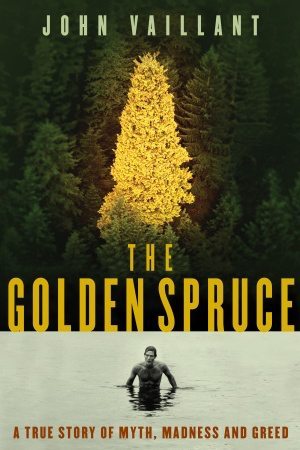It’s been two years now since I first read The Golden Spruce, and in that time, there hasn’t been another book I’ve recommended as readily or as often to friends looking for suggestions.
I’ve always had a serious soft spot for historical non-fiction, though I recognize that not everyone is keen on reading history in their spare time. But while The Golden Spruce occupies this genre of historical non-fiction, it follows a thrilling mystery and is much more engaging than most other historical accounts I have read.
Part of what fascinates me about the book is its location. The majority of the book is set in the Pacific Northwest, a region whose rugged coastal, temperate rainforest has always intrigued and mystified me. One of the most remote areas of the PNW is the Queen Charlotte Islands, also known as Haida Gwaii, home to the Haida people.
Eighty kilometers off of the northern coast of British Columbia, the archipelago of more than one hundred and fifty islands has a dramatic landscape, with sharp coastal cliffs, towering forests, and snow-capped peaks. Many regard it as a magical place, made all the more special by how hard it is to reach.
While Haida Gwaii has an almost mythical quality to it, one of its islands was also home to a sacred, beautiful tree, rarely seen in nature. The three hundred year old Sitka spruce had brilliant golden needles.
In 1997, however, the perfectly healthy golden spruce became the target of an act of ecological terrorism. After being cut almost completely with a chainsaw in the dead of night, the golden spruce fell several days later.
In order to tell the whole story of why a passionate (and some would say brilliant) timber scout named Grant Hadwin felt compelled to attack such a sacred, monumental tree, a number of different histories need to be told.
First, the history of logging in British Columbia: a controversial, dangerous, destructive—and many would say—necessary industry.
Second, a discussion of the early European explorers and their interactions with the native peoples is also critical to the understanding of the region.
Finally, all of this is tied back into the story of Grant Hadwin, his family, and his eventual demise.
John Vaillant jumps between stories almost chapter to chapter, and not necessarily chronologically. I’ve read a number of authors that fail to effectively structure a narrative this way and mostly just make it difficult to keep different story lines straight, the The Golden Spruce never feels overwhelming.
The Golden Spruce contains a lot facts, but Vaillant presents them in a way that never feels tedious, and I constantly found myself making note of sections and cool tidbits that I wanted to share with whoever happened to be sitting close by.
Vaillant is a beautiful writer that weaves elegant descriptions of nature with historical timelines and various stories. Few history books have had me turning the pages as eagerly.
Throughout The Golden Spruce, we hear about the life of Grant Hadwin, the man who hacked away at the sacred golden spruce in the middle of the night, in the winter of 1997. Several days later, the tree blew over in a gust of wind, devastating the local community, as well those around the world who knew of the tree.
“Hadwin had cut down what may have been the only tree on the continent capable of uniting Natives, loggers, and environmentalists, not to mention scientists, foresters, and ordinary citizens, in sorrow and outrage.”
Hadwin’s story is certainly an interesting one. He had worked in the timber industry since he was 16, and loved the woods more than most. An incredibly skilled and competent outdoorsmen, he thrived alone and when roaming in the mountains. Though eventually he settled down with a family and took up the profession of timber scout, he began to struggle with some of the ethical issues of logging. As these issues became increasingly apparent and disturbing to Hadwin, and as his discontent in that world became more acute, his behavior grew much more erratic.
Eventually, Hadwin made his way over to Haida Gwaii, and hacked away at the golden spruce.
Soon after, Hadwin turned himself in.
Then, several days before his court date, he disappeared, and to this day, he has not been found.
Grant Hadwin’s story raises larger questions about the morality, sustainability, and greed behind resource consumption, and what it means for large companies to have so much control and power over those resources.
Bottom Line
The Golden Spruce is a beautifully written book that artfully incorporates many different, overlapping stories that are held together by a fascinating mystery. It is a great read for history lovers, and it is also very accessible to those who might be hesitant to dive into the genre of historical non-fiction.


Nice summary! I read this book years ago. Loved it.